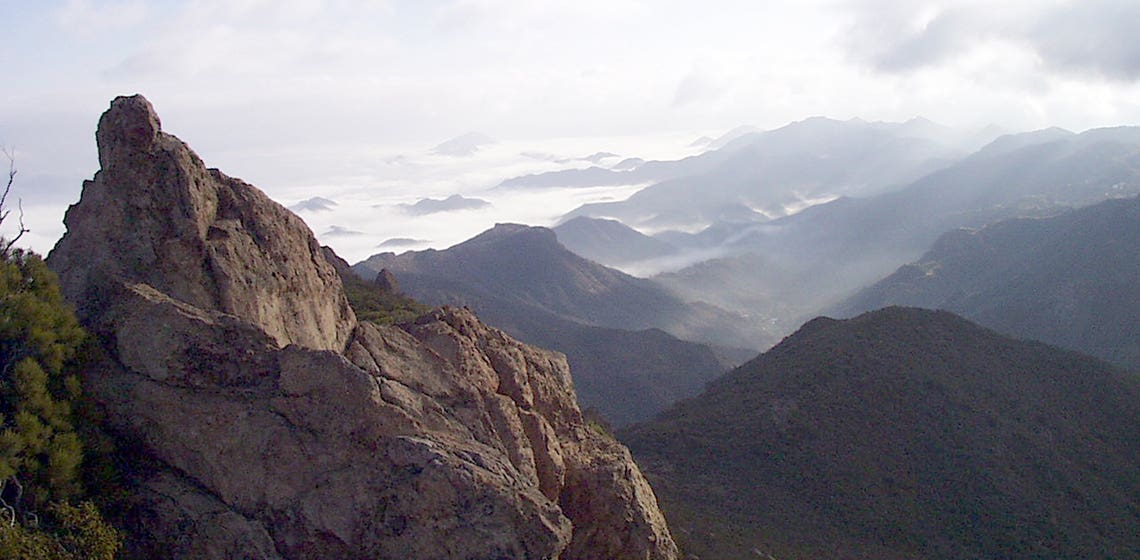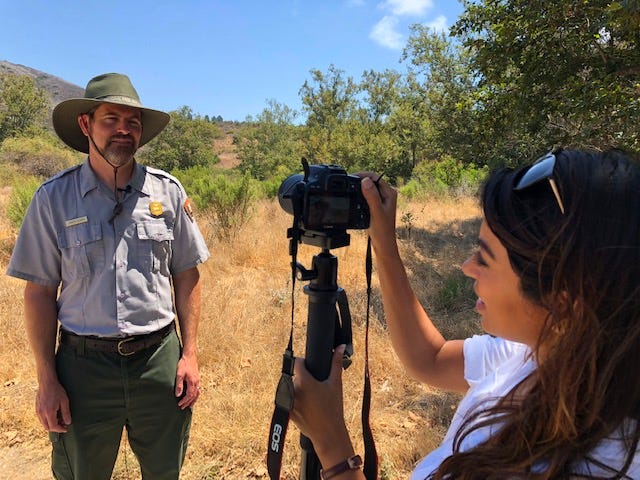I love the vegetation out here. I used to hike out here a lot before I was a biologist. I loved it then, I just didn’t understand the ecology of it. But I love being outside, it has a certain feel. California has a certain feel that you won’t feel anywhere else in the world.
The Santa Monica Mountains, the ancestral home of the Chumash/Tongva people, just outside Los Angeles, California, is one of only five Mediterranean ecosystems in the world. Its mountains provide the city of Angels--nearly 4 million people--with clean air, water and connection with the wild. At 153,075 acres, it’s the largest urban national park in the world. Despite its proximity to Los Angeles, the park boasts amazing scenic vistas and places to experience the wonder of the wild.
The Santa Monica Mountains National Recreation Area is part of the California Floristic Province. It’s just one of just 36 Biodiversity Hotspots in the world, and is an irreplaceable place, harboring an exceptional diversity of wildlife, including species that are rare and found nowhere else on the planet.
Verity’s Dudleya is endemic to the Santa Monica Mountains. There are less than 1,000 of the Critically Endangered Dudleya living in six populations at the west end of the mountains. Succulents are not the only rare plants living in the recreation area. There is an Endangered sunflower called Lyon's Pentachaeta, and other important species include, Chocolate Lilies, Valley Oak Trees and the minty-smelling Coastal Sage Scrub.
Despite being a protected national recreation area since the 1970s, the mountains have been scorched by large fires that are growing in intensity and ferocity due to climate change. Two fires within five years of each other, the Springs fire in 2013 (24,238 acres) and the Woolsey fire in 2018 burned about half the mountain range including over 21,000 acres (88%) of NPS land. No other fire in recorded history has burned as much of the Santa Monica Mountains.
“I think it was a big wake up call for everybody,” says Joseph. “We’ve been dealing with these big fires, and a lot of people have been interested in supporting rehabilitation. I’ve just seen an uptick in volunteerism.”
And Joseph can use all the volunteers available. He is leading an effort to rewild the Santa Monica Mountains--focusing on areas ravaged by wildfires--and to make the recreation area more resilient to climate change by restoring native plants and trees.
Re:wild, the National Park Service and Snap, Inc., are teaming up to plant 100,000 native trees, grasses, plants and shrubs between 2021 and 2023. It will be the biggest rewilding project in the Santa Monica Mountains National Recreation Area to date.
The National Park Service, with the help of their dedicated volunteers and interns, will be getting shovels in the dirt and baby plants in the ground. Hundreds of interns have worked in the park during the past decade. Volunteer events focused on restoring the recreation area have attracted hundreds of people--at one event 750 people planted 3,000 plants in one day.
Joseph and researchers with the National Park Service will monitor the newly planted trees, shrubs and grasses over the next three years to see how they fare. They are hoping that if the plants do well, so will insects, birds, snakes and eventually big mammals that live in the Santa Monica Mountains.
Though Joseph is focusing on rewilding efforts in the Santa Monica Mountains, his work is part of a bigger movement to rewild parks and nature areas. He says natural areas across the world could use the help of volunteers to restore them. He recommends doing some research on parks where you live.
“I’m sure they’re looking for help,” he says.
Top photo: View of the Pacific Ocean from the Santa Monica Mountains in California. (Photo courtesy of the National Park Service)

